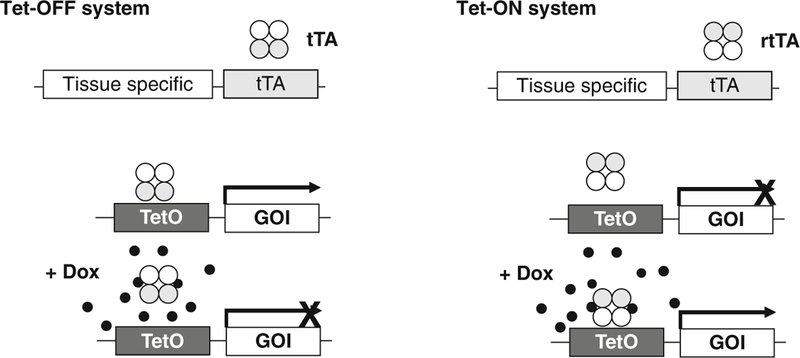Fig. 1.

Ligand-controlled expression of oncogenes in the mammary gland using bi-transgenic tetracycline-inducible systems. The Tet-OFF system (left panel) allows for a temporally and spatially controlled expression of a gene-of-interest (GOI) in the absence of the ligand. The tetracycline-controlled transactivator (tTA) is expressed under the regulation of a tissue-specific promoter. The tTA transactivates the expression of the GOI by binding to the Tet-controlled operon in the absence of a ligand. Administration of tetracycline or its more potent derivative doxycycline (Dox) can suppress the expression of the GOI, and withdrawal of the ligand leads to a reactivation of the TetO-driven responder transgene. The Tet-ON system (right panel) is based in the tissue-specific expression of the reverse tetracycline-controlled transactivator (rtTA), which only mediates a transactivation of the TetO promoter-driven GOI in the presence of Dox
